Does your husky seem anxious? Watch out for these Top 5 most common husky anxiety symptoms. Keep an eye on their behavior and make sure to provide the care and attention they need.
| Name of the Quick Fact | Data Itself |
|---|---|
| Excessive Howling or Whining | Huskies suffering from anxiety may vocalize more by howling or whining frequently, especially when left alone. |
| Destructive Behavior | Anxious Huskies can engage in destructive chewing or digging, damaging furniture, doors, and personal items. |
| Pacing or Restlessness | Anxiety can cause Huskies to pace back and forth repetitively or appear unable to settle down comfortably. |
| Panting and Shaking | A sign of Husky anxiety can be excessive panting and shaking even without physical exertion or high temperatures. |
| Escape Behavior | Huskies with anxiety may try to escape from their home or yard, leading to potentially dangerous situations. |
| Lack of Appetite | Anxious Huskies might show a decreased interest in food or changes in their eating patterns. |
| Excessive Licking or Self-Grooming | Anxiety can manifest as obsessive licking or grooming, which can lead to skin issues in Huskies. |
| Urination or Defecation in the House | Huskies may urinate or defecate in the house due to anxiety, even if they are housetrained. |
| Increased Attachment or Clinginess | An anxious Husky may become overly dependent on their owner, following them around closely and seeking constant attention. |
| Sudden Aggression | In some cases, anxiety can lead to unusual aggressive behavior towards other animals or people. |
Top most common husky anxiety symptoms
Excessive vocalization is one of the top most common husky anxiety symptoms. When huskies are feeling anxious, they may exhibit an increase in howling, barking, or whining, which is uncharacteristic of their normal vocal behavior.
This sudden change in vocalization can be a clear indicator of underlying anxiety in these dogs. Owners should pay close attention to any unusual vocal patterns and consider them as potential signals of distress.
Additionally, it’s important to understand that excessive vocalization can also be a way for huskies to communicate their unease or discomfort, especially when triggered by specific stressors. Addressing this symptom and identifying the root cause of the anxiety is crucial to ensuring the well-being of the husky.
Providing a safe and secure environment, along with behavioral training and soothing techniques, can help alleviate the anxiety that leads to excessive vocalization in huskies. Ultimately, recognizing and addressing this change in vocal behavior is vital in supporting the overall mental health of huskies. Therefore, it’s important for husky owners to acknowledge the significance of excessive vocalization as a potential indicator of anxiety and take proactive steps to address the underlying concerns..
Understanding your husky's specific type can play a crucial role in recognizing their behavioral patterns and needs. Uncover essential insights into your furry companion's characteristics and learn tailored caregiving strategies by exploring our comprehensive guide: "Discover Your Husky's Type! Learn How to Best Care for Them."
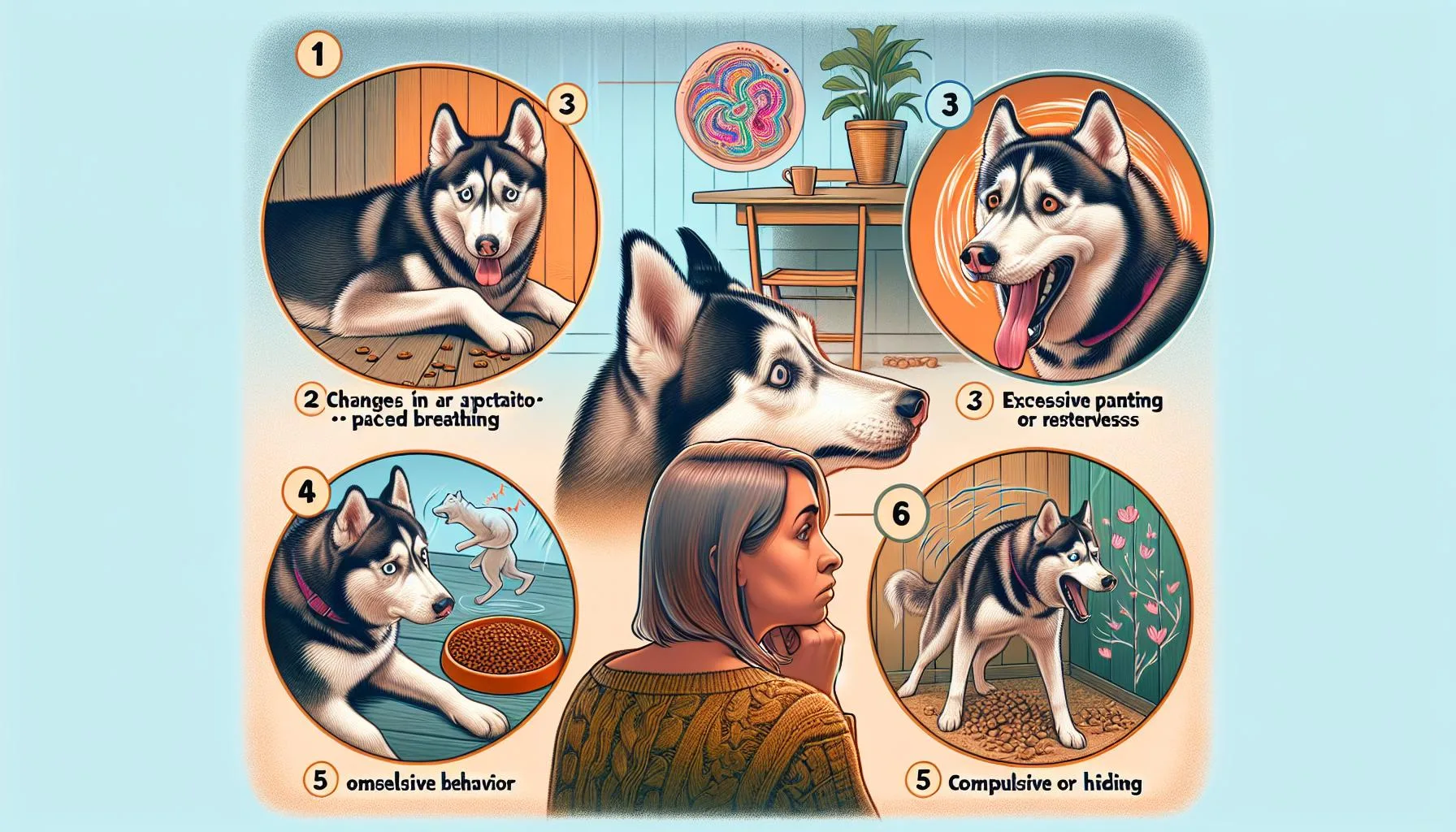
Destructive Behavior
Anxious huskies often display destructive behavior as a manifestation of their anxiety. This can include chewing on furniture, digging holes in the yard, or engaging in other destructive activities, which are some of the top most common husky anxiety symptoms.
This behavior can be distressing for both the husky and their owner, and it’s crucial to recognize it as a sign of underlying anxiety rather than mere disobedience. Huskies resort to such behavior as a coping mechanism, attempting to alleviate their stress and anxiety through physical activities.
Understanding these destructive tendencies as a symptom of anxiety is vital in addressing the root cause of the issue and implementing appropriate strategies for managing a distressed husky. Providing suitable outlets for physical and mental stimulation, along with positive reinforcement training, can effectively redirect and minimize these destructive behaviors in anxious huskies.
Consistent and patient intervention is essential to help the husky overcome their anxiety and lead a more balanced and contented life.
It’s crucial to address destructive behavior as a symptom of anxiety rather than mere disobedience.
- Chewing on furniture and digging holes are common destructive behaviors in anxious huskies.
- Huskies resort to such behavior as a coping mechanism to alleviate their stress and anxiety.
- Implementing appropriate strategies for managing a distressed husky is essential.
Top most common husky anxiety symptoms
Providing suitable outlets for physical and mental stimulation, along with positive reinforcement training, can effectively redirect and minimize these destructive behaviors in anxious huskies.
To explore the diverse and captivating variety of husky mix breeds and their unique characteristics, visit Planet Husky for an in-depth look. Uncover the world of husky mix breeds and their distinct qualities today.
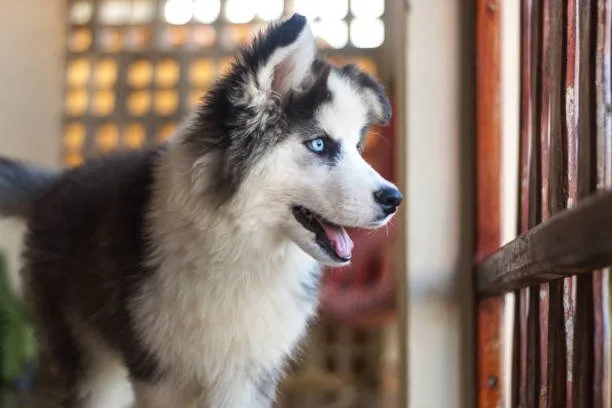
Pacing and Restlessness
Top most common husky anxiety symptoms
Huskies, like many other dog breeds, may exhibit restlessness and pacing as one of the top most common husky anxiety symptoms. When feeling anxious, a husky may display this behavior, often pacing back and forth or seeming unable to relax.
This restlessness can sometimes be triggered by various factors such as separation anxiety, changes in routine, fear of loud noises, or even unfamiliar environments. It’s important for husky owners to recognize pacing and restlessness as signs of anxiety, as addressing the underlying triggers is crucial for the well-being of their pet. Additionally, huskies may also exhibit restlessness and pacing when they are not getting adequate physical or mental stimulation.
Lack of exercise and mental enrichment can lead to pent-up energy, resulting in anxious behavior such as restless pacing. Therefore, ensuring that huskies receive sufficient exercise, playtime, and mental stimulation is essential for preventing and alleviating restlessness and anxiety.
Moreover, creating a calm and secure environment for the husky, with familiar scents and comforting toys, can also help in reducing their restlessness and anxiety levels. In summary, pacing and restlessness are common indicators of anxiety in huskies, and it’s crucial for owners to identify and address the triggers for such behavior. Providing adequate exercise, mental stimulation, and a secure environment can greatly contribute to alleviating this symptom of anxiety in huskies..
Understanding these behavior patterns is crucial for providing a comfortable environment for your anxious husky. Delve deeper into solutions for a cleaner, pet-friendly home by exploring the attributes of low-shedding husky breeds in our detailed article, "Discover Your Ideal Husky Companion: Low-Shedding Variants."
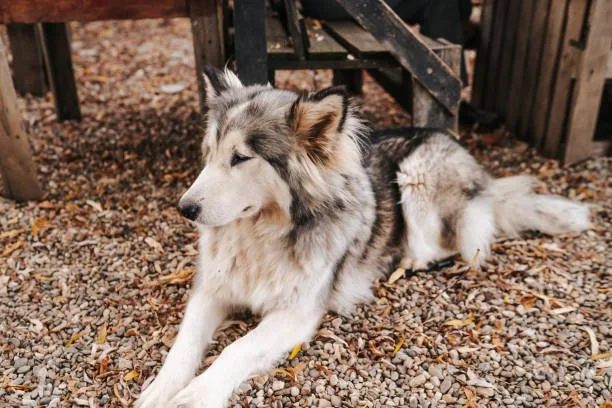
Shaking or Trembling
One of the top most common husky anxiety symptoms is shaking or trembling. When huskies experience anxiety, they may physically shake or tremble as a response to their distress.
This behavior may be particularly noticeable during stressful situations or when the husky is confronted with triggers that cause anxiety. It’s crucial for owners to differentiate this shaking or trembling from other potential causes such as cold temperatures or physical discomfort.
To further explore the intricacies of pet care and discover the fascinating world of a feline breed with a striking resemblance to the husky, we encourage you to peruse our comprehensive guide. Delve into the details by visiting "Uncovering the Mystique of the Husky-Like Cat: Caring for Your Unique Pet."
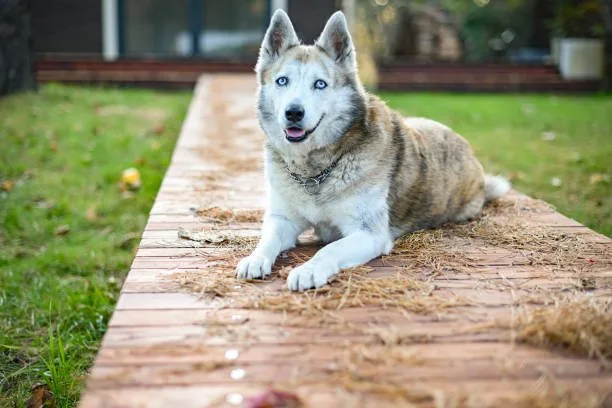
Escaping or Attempted Escape
An anxious husky might exhibit escaping or attempted escape behaviors as a signal of their distress. This can be a clear indicator of their anxiety and the need for proper containment measures to ensure their safety.
Huskies are known for their high energy and independent nature, making them more prone to attempting escape when feeling anxious or stressed. Providing a secure and escape-proof environment is crucial to prevent any potential harm to the dog or others.
It’s important for owners to recognize that escaping or attempted escape is one of the top most common husky anxiety symptoms and should not be ignored.
This behavior can pose risks to the husky’s well-being as well as the safety of the surrounding area.
- Secure fencing and gates are essential to prevent escape attempts. Regularly inspecting the boundaries for any potential weak points or gaps is necessary to ensure that the husky cannot find a way out during moments of distress.
- Utilizing secure kennels or crates inside the home can provide a safe space for the husky to retreat to when feeling anxious, reducing the likelihood of escape attempts.
- Understanding the triggers that lead to escape behavior is also crucial.
Whether it’s loud noises, unfamiliar visitors, or separation anxiety, addressing these triggers can help minimize the husky’s desire to escape.
By prioritizing secure containment and addressing the underlying anxiety triggers, owners can help ensure the safety and well-being of their anxious husky.
For a deeper understanding of your Husky's developmental stages, which can influence behavior and containment strategies, explore our comprehensive guide on their growth cycle. Gain insights into your pet's maturation process with our article, "Siberian Husky Growth Timeline: From Pup to Adult".
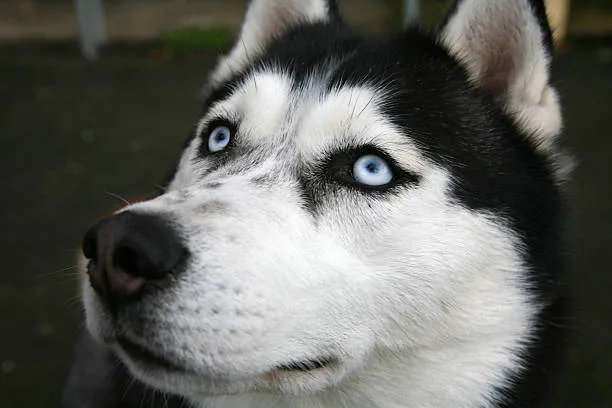
Sudden Changes in Bathroom Habits
American Kennel Club: Top most common husky anxiety symptoms
Sudden changes in bathroom habits, such as indoor accidents or frequent urination, can be indicative of anxiety in huskies. These behaviors may manifest as a result of the stress and unease experienced by the dog.
It’s crucial to recognize that these changes are often linked to anxiety and are not merely behavioral issues. In such cases, it’s important to be attentive to the top most common husky anxiety symptoms in order to address the underlying cause for the abrupt alterations in bathroom habits. Anxiety can affect a husky’s ability to control their bladder and bowel movements, leading to unexpected accidents inside the house.
It’s essential to note any sudden shifts in their bathroom routine and to consider anxiety as a potential root cause. Additionally, excessive pacing and restlessness may also be present alongside these changes in bathroom habits, serving as additional indicators of anxiety.
Consistent monitoring of a husky’s bathroom habits can provide valuable insight into their emotional well-being. These observations, coupled with an understanding of the other top most common husky anxiety symptoms, can help identify and address the underlying issue, enabling proper measures to be taken to alleviate the dog’s anxiety..
Understanding your husky's behavior is essential for their well-being, and recognizing the signs of anxiety could prevent potential accidents and improve their health. Discover more insights and tips on how to maintain your husky's comfort, especially during warmer seasons, by reading our detailed guide on the optimal cooling pads for huskies.
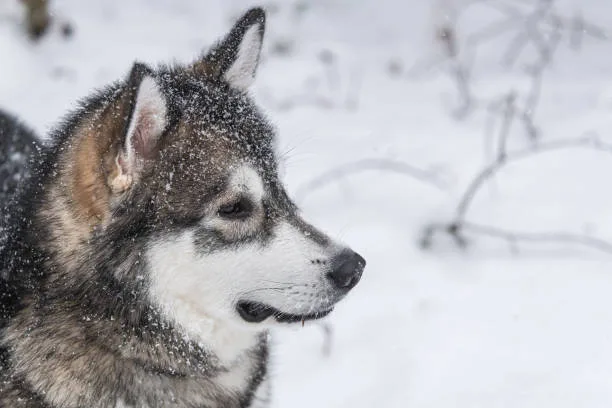
Strategies for Reducing Husky Anxiety
When it comes to alleviating anxiety in your husky, incorporating regular exercise routines is crucial. Huskies are an active breed that requires physical exertion to maintain their mental and emotional well-being.
Daily walks, runs, or engaging in interactive play sessions not only help in burning off excess energy but also promote a sense of fulfillment.
In addition to physical activity, mental stimulation is vital for reducing anxiety in huskies. Interactive toys, puzzle feeders, and obedience training exercises can keep your husky’s mind engaged, preventing boredom and anxiety.
These activities also reinforce the bond between you and your pet, further promoting a sense of security and contentment.
On Quora about: Top most common husky anxiety symptoms
Calming techniques, such as creating a safe and quiet space for your husky, can offer relief from anxiety triggers. Establishing a consistent daily routine can also provide a sense of predictability, which is comforting for huskies.
Furthermore, integrating relaxation methods like aromatherapy or soothing music can have a calming effect on your pet.
Explore more tips and uncover fascinating insights into your husky's unique behaviors by reading our detailed guide. Delve into the comforts of husky sleeping habits with our article, "Unraveling the Mystery: Your Husky's Under-the-Bed Retreat."
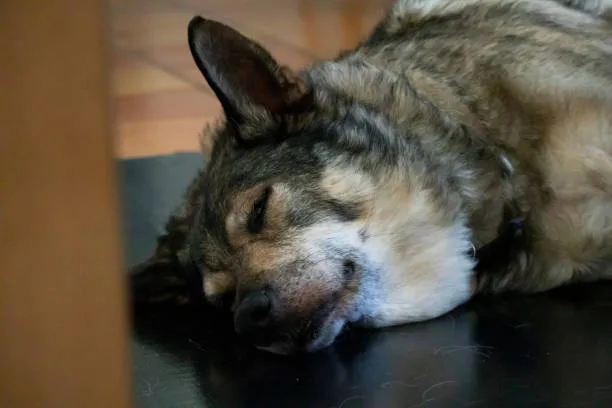
Identifying and Addressing Husky Anxiety Triggers
Siberian Huskies are known to exhibit specific anxiety triggers, and recognizing the signs of distress in these dogs is vital for their well-being. Some of the top common husky anxiety symptoms triggered by environmental changes, separation, unfamiliar people or animals, loud noises, and disruptions to routine can be quite pronounced due to the breed’s unique temperament.
Owners should be mindful of these triggers and work towards managing them to prevent Husky panic attacks and alleviate social anxiety. Strategies such as gradual desensitization to environmental changes, structured separation training, and positive socialization techniques can play a crucial role in addressing these triggers effectively.
Understanding these anxiety triggers and implementing tailored strategies can significantly enhance a Husky’s mental well-being.
It is important for owners to understand the specific anxiety triggers that can affect their Husky’s well-being.
Top common husky anxiety symptoms such as environmental changes, separation, and disruptions to routine need to be managed proactively.
Reddit Top most common husky anxiety symptoms
Owners can employ strategies like gradual desensitization and positive socialization to address these triggers effectively.
Understanding your Husky's anxiety is crucial for nurturing a healthy, happy companion. Dive deeper into creating a supportive environment for your Husky by reading our detailed article, "Discover the Cost of a Husky Puppy and More." Uncover the expenses and care considerations for your future furry friend.
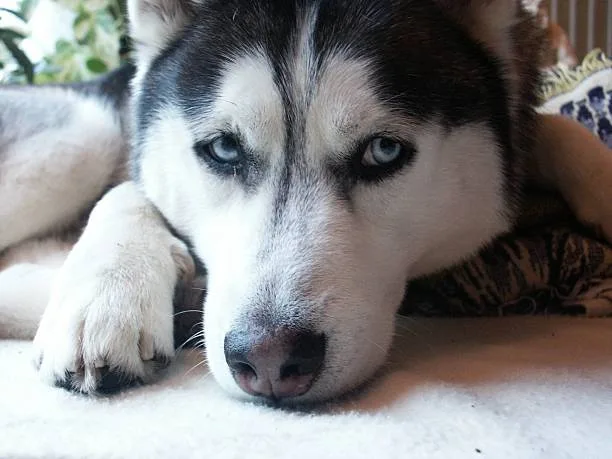
Guidelines and Techniques for Alleviating Husky Anxiety
Behavioral training tailored to Huskies can play a crucial role in managing their anxiety. Implementing structured training routines focusing on positive reinforcement and rewards can help in modifying undesirable behaviors linked to anxiety.
Additionally, incorporating mental stimulation through interactive games, puzzle toys, and obedience training can provide Huskies with a constructive outlet for their energy, thereby reducing their anxiety levels.
Canine separation anxiety is a common issue among Huskies, and implementing techniques to manage this can greatly alleviate their distress.
Gradual desensitization through practicing short absences and gradually increasing the duration can help Huskies adjust to being alone, reducing their anxiety when separated from their owners. Counter-conditioning techniques involving associating the owner’s departure with positive experiences can also aid in mitigating separation anxiety in Huskies, fostering a sense of security and comfort in their absence.
Furthermore, relaxation strategies for Huskies can be implemented to reduce their anxiety levels.
Creating a peaceful and safe environment with the use of comfortable bedding, soothing music, and pheromone diffusers can promote a calming atmosphere for anxious Huskies. Physical exercise and regular walks are also essential for Huskies to release excess energy and reduce anxiety.
Engaging in outdoor activities can provide mental stimulation and enrichment, contributing to a balanced and contented Husky.
On Medium about: Top most common husky anxiety symptoms
In summary, the application of tailored behavioral training, stress-relief methods, and relaxation techniques can significantly alleviate Husky anxiety, improving their overall well-being and behavior.
To delve even deeper into the world of canine behavior and care, explore our comprehensive guide on the subject. For a broader understanding of these loyal companions, visit the Wikipedia page on dogs for a detailed overview.
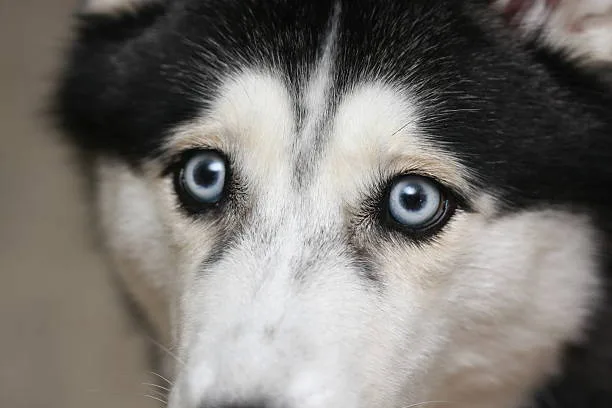
Understanding and Handling Canine Anxiety Disorders
Huskies, like other dog breeds, can experience anxiety disorders that may necessitate professional intervention. One of the top most common husky anxiety symptoms is excessive vocalization, including howling, barking, or whining, which can be a sign of underlying anxiety disorders.
Moreover, destructive behavior, such as chewing on furniture or engaging in other destructive activities, can also indicate severe anxiety in huskies. These symptoms, along with pacing and restlessness, shaking or trembling, and attempting to escape, are vital indicators that a husky may be grappling with anxiety disorders. Furthermore, recognizing sudden changes in a husky’s bathroom habits or uncharacteristic shifts in their body language, such as ears back and avoidance of eye contact, can help identify when professional help may be necessary.
Behavior modification options, including training and environmental enrichment, can play a significant role in alleviating husky anxiety. However, in cases where the symptoms persist or worsen, seeking the assistance of a veterinarian or professional dog trainer becomes crucial.
Professional help can lead to effective dog anxiety treatment and pet anxiety solutions, ultimately enhancing a husky’s overall mental wellbeing..
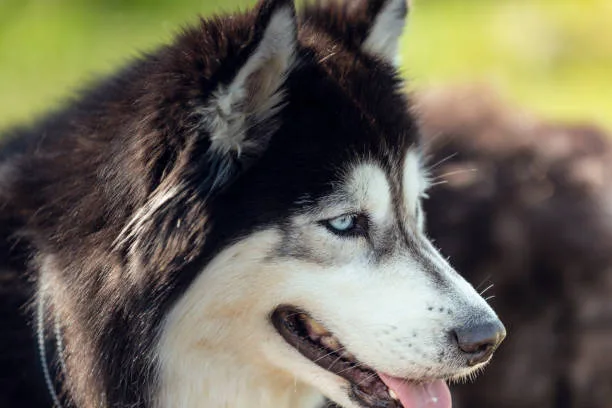
Implementing Strategies for Long-Term Anxiety Management in Huskies
Long-term anxiety management in Huskies is crucial for their overall well-being. The key to reducing canine stress and preventing anxiety lies in establishing a supportive environment and regular routines.
Consistent and structured exercise plays a vital role in alleviating anxiety in Huskies. Daily walks, interactive games, and engaging activities contribute to their physical and mental well-being, helping to release pent-up energy and reduce anxiety levels. Additionally, behavioral training is an essential element in Husky anxiety management.
Teaching obedience commands, establishing boundaries, and reinforcing positive behaviors through reward-based training can significantly reduce anxiety and promote a sense of security for the Husky. Consistency in training methods and setting clear expectations are fundamental in ensuring long-term anxiety management. Furthermore, mental stimulation and environmental enrichment are key factors in maintaining a Husky’s mental health.
Providing interactive toys, puzzle feeders, and engaging activities can help alleviate boredom and prevent anxiety-related behaviors. Creating a stimulating and enriching environment with varied experiences and sensory stimulation can positively impact a Husky’s emotional well-being and reduce anxiety symptoms. In conclusion, long-term anxiety management in Huskies necessitates a holistic approach that encompasses regular exercise, comprehensive behavioral training, and a stimulating environment.
By integrating these strategies, owners can create a supportive and enriching setting that promotes a Husky’s mental health and mitigates anxiety in the long run..
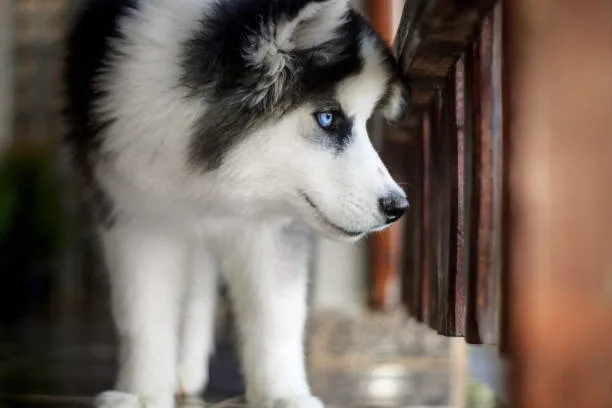
When to Seek Professional Help
Recognizing when to seek professional help for managing your husky’s anxiety is crucial for their overall wellbeing. As a husky owner, it’s important to be aware of the top most common husky anxiety symptoms that indicate the need for professional intervention.
If you observe persistent and severe signs of anxiety such as excessive vocalization, destructive behavior, pacing and restlessness, shaking or trembling, escaping or attempted escape, changes in body language, sudden changes in bathroom habits, or any combination of these behaviors, it’s time to seek the expertise of a veterinarian or a professional dog trainer. These professionals can conduct a thorough evaluation of your husky’s anxiety triggers and provide appropriate guidance and treatment plans tailored to your dog’s specific needs.
Remember, seeking professional help early can make a significant difference in effectively managing your husky’s anxiety and improving their quality of life.
Remember, seeking professional help early can make a significant difference in effectively managing your husky’s anxiety and improving their quality of life.

Leave a Reply